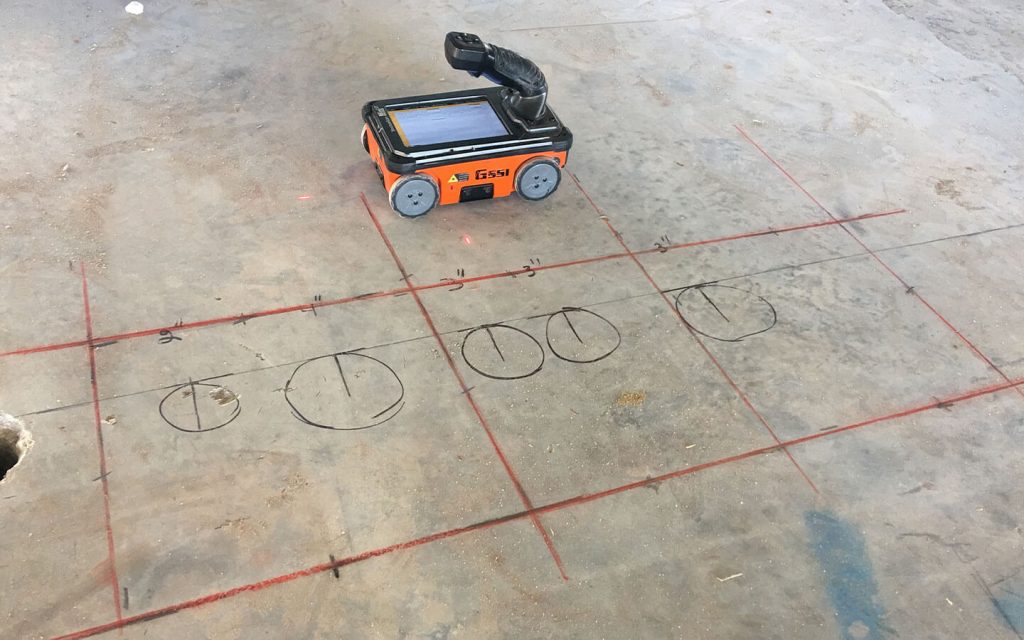Enhance Task Efficiency with RainierGPR Concrete Scanning Solutions
Enhance Task Efficiency with RainierGPR Concrete Scanning Solutions
Blog Article
Discovering the Midst: A Comprehensive Overview to Concrete Scanning and Its Diverse Applications
In the realm of construction and infrastructure advancement, the precise process of concrete scanning holds a pivotal role in making certain the architectural stability and security of jobs. As technology continues to evolve, the applications of concrete scanning have actually increased far past plain surface-level evaluations.
Significance of Concrete Scanning
Recognizing the value of concrete scanning is essential in making certain the safety and security and stability of structures throughout building and remodelling projects. Concrete scanning makes use of sophisticated technologies such as ground-penetrating radar (GPR) and electromagnetic induction to discover ingrained things, spaces, or other abnormalities within concrete structures.
Moreover, concrete scanning plays a crucial function in making certain conformity with building ordinance and regulations that mandate the security of existing architectural elements throughout construction tasks. By properly mapping out the inner make-up of concrete, scanning technologies make it possible for construction specialists to make informed choices that promote the structural security and toughness of structures and facilities projects. Essentially, the importance of concrete scanning hinges on its ability to safeguard both the structural honesty and the personnel included in building endeavors.
Technologies Utilized in Concrete Scanning
Concrete scanning counts on innovative technologies such as ground-penetrating radar (GPR) and electromagnetic induction to precisely find ingrained things and anomalies within concrete structures. Ground-penetrating radar operates by releasing high-frequency electro-magnetic waves right into the concrete.
Electromagnetic induction, on the various other hand, functions by producing electro-magnetic areas around a concrete framework with a transmitter coil. When metal objects are present within the concrete, they interrupt these magnetic fields, causing eddy currents to flow with the metal. By measuring the changes in the magnetic fields with a receiver coil, the system can pinpoint the location of metal items in the concrete.
These innovative modern technologies play an essential duty in non-destructive screening, guaranteeing the safety and stability of concrete structures in various sectors.
Applications in Building Market
Within the building market, concrete scanning modern technology discovers varied applications that boost job efficiency and safety and security. In addition, concrete scanning is utilized for situating spaces, such as air pockets or areas of deterioration within concrete, which can jeopardize the total strength of a structure. Concrete scanning plays a crucial duty in top quality control by verifying the density of concrete covers over support, making certain compliance with design requirements and requirements.

Safety Advantages of Concrete Scanning
In the world of construction security, the application of concrete scanning innovation provides an extremely important advantage in preemptively recognizing potential threats and fortifying architectural integrity. By making use of innovative scanning methods such as ground-penetrating radar (GPR) and electromagnetic induction, building teams can properly find rebar, post-tension wires, channels, and other covert things within concrete structures. This positive technique significantly lowers the threat of unintended strikes throughout exploration, cutting, or coring activities, thus avoiding pricey damages, injuries, and task delays.
Additionally, concrete scanning boosts worker security by giving real-time information about the architectural problem of concrete elements. This information enables building and construction professionals to analyze the stability of existing structures, recognize deterioration or flaws, and make informed choices concerning fixing and maintenance treatments. By resolving possible safety problems promptly, concrete scanning contributes to developing a protected workplace and mitigating the likelihood of try this out architectural failures or mishaps on construction websites. Inevitably, the safety advantages of concrete scanning not only guard assets and lives yet also promote sector standards for quality and reliability.
Future Fads in Concrete Scanning
Arising improvements in scanning modern technology are positioned to revolutionize the area of concrete examination and evaluation. By utilizing the power of AI, these systems can examine substantial amounts of information collected throughout scanning processes to offer more in-depth and exact insights into the problem of concrete frameworks.
Another considerable trend is the growth of more easy to use and portable scanning tools. Miniaturization of scanning equipment enables easier accessibility to restricted rooms and remote locations, making inspections more thorough and reliable. Furthermore, innovations in cordless interaction technologies enable real-time information transfer and evaluation, helping with quicker decision-making procedures.
In addition, there is an expanding focus on sustainability in concrete scanning technologies - RainierGPR Concrete Scanning. Suppliers are significantly including eco-friendly products and energy-efficient functions into their tools to reduce ecological effect. These future trends are established to improve the effectiveness, precision, and sustainability of concrete scanning practices, shaping the market's future landscape
Conclusion
In verdict, concrete scanning plays an important role in the building industry by guaranteeing the safety and security and efficiency of numerous projects. As innovation breakthroughs, the future view it now of concrete scanning holds promising developments for boosting construction processes.

Report this page